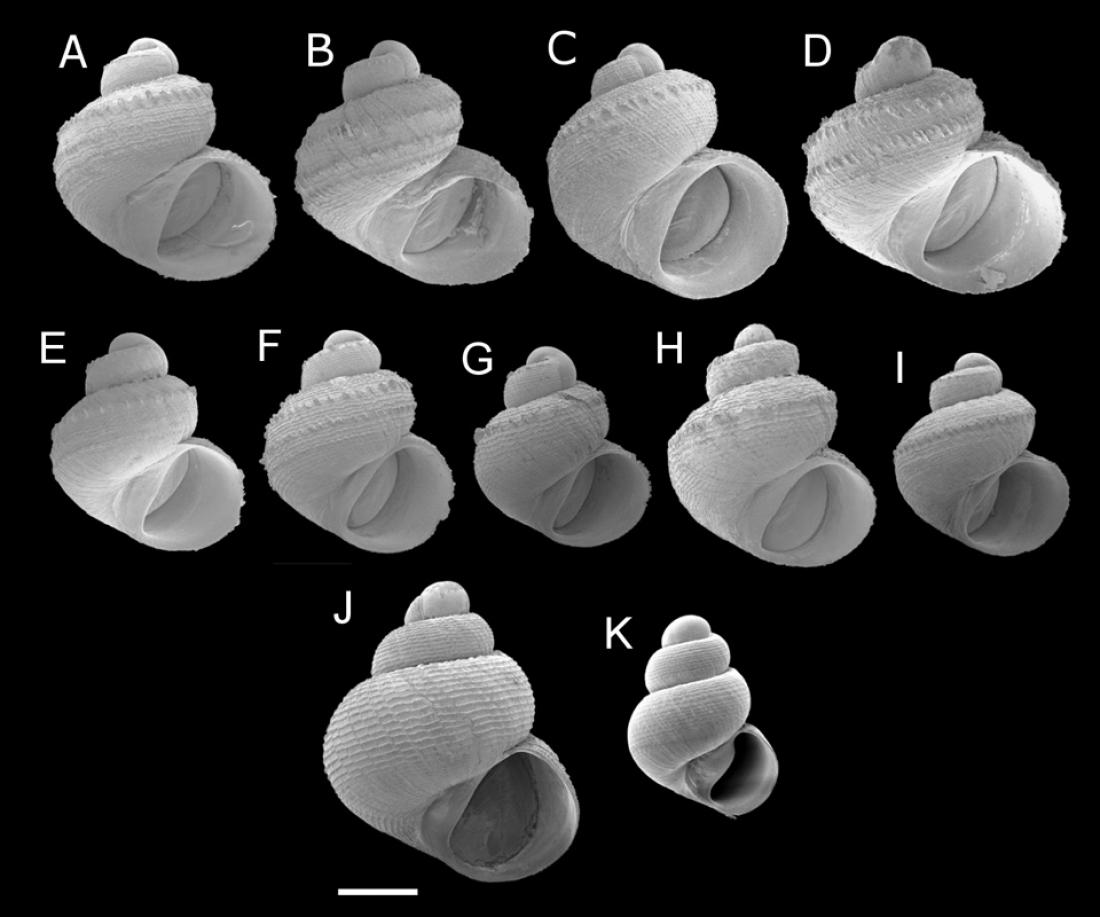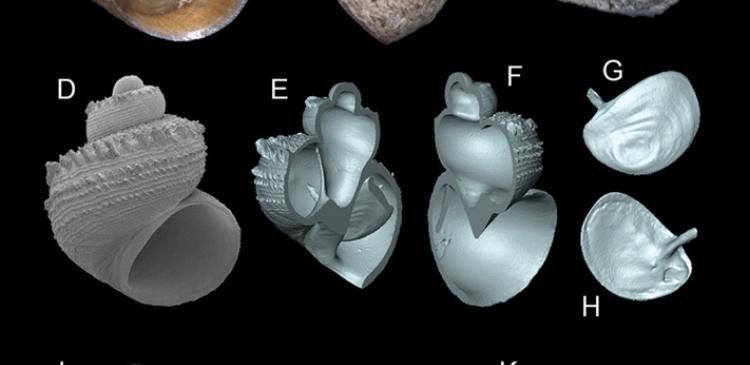Intraspecies variation in shell shape and sculpture of Georissa.
Zoologists have identified six new species of minute land snails from the genus Georissa that are entirely new to science.
Georissa snails are commonly found on limestone rocks where they forage mosses, algae and lichens. They are non-pulmonate snails, lacking a respiratory sac for breathing. Until now, little was known about Georissa snails compared to other non-pulmonate snails in the region.
Mohd Zacaery Khalik, a zoologist at Universiti Malaysia Sarawak, and colleagues from the Netherlands studied a subgroup within Georissa, which they dubbed the scaly group because of the conspicuous scale-like sculptures on their shells. It is unclear why only some species in the genus have these unique scales.
“We have partially revealed the previously unrecognized diversity of the genus Georissa of Malaysian Borneo,” says Khalik. “But we still have much to learn about the relationships between the different Georissa species.”
They used a combination of molecular and morphological data and presented detailed descriptions of each species, chiefly to aid ‘species delimitation’, the process of deciding how individuals and populations fit into natural groups. They extracted and sequenced mitochondrial DNA from 127 snails and used this information to reveal the taxonomic relationship between species in the group.
The genetic information, in combination with several morphological characteristics, such as shell shape and size and the sculptural patterns on the shell whorls, allowed them to distinguish the snail species. Since the shells measure just a couple of millimetres in length, the researchers used scanning electron microscopy and 3D modelling conducted through X-ray scanning to show the detailed microscopic sculptural patterns on the outer and inner parts of the shell.
The study, published in ZooKeys, revealed that there are at least 13 species of the scaly group present in Malaysian Borneo. Six of these species had not been previously identified and are new to science: G. anyiensis, G. muluensis, G. bauensis, G. silaburensis, G. kinabatanganensis, and G. sepulutensis. The six new species are all named after the locations where they were first discovered.
This study is a first step towards unravelling the evolutionary history of Georissa snails. The researchers next plan to describe all Bornean Georissa and then propose a conclusive taxonomic classification of the genus.
“Georissa has conventionally been categorized into four species groups,” Khalik says. “Once we complete comprehensive species descriptions, we anticipate that classification can be streamlined, likely into two groups.”
They also hope further investigations will reveal why and how some species got their scales.
For further information, contact:
Mohd Zacaery Khalik
Faculty of Resource Science and Technology
Universiti Malaysia Sarawak
E-mail: [email protected]




